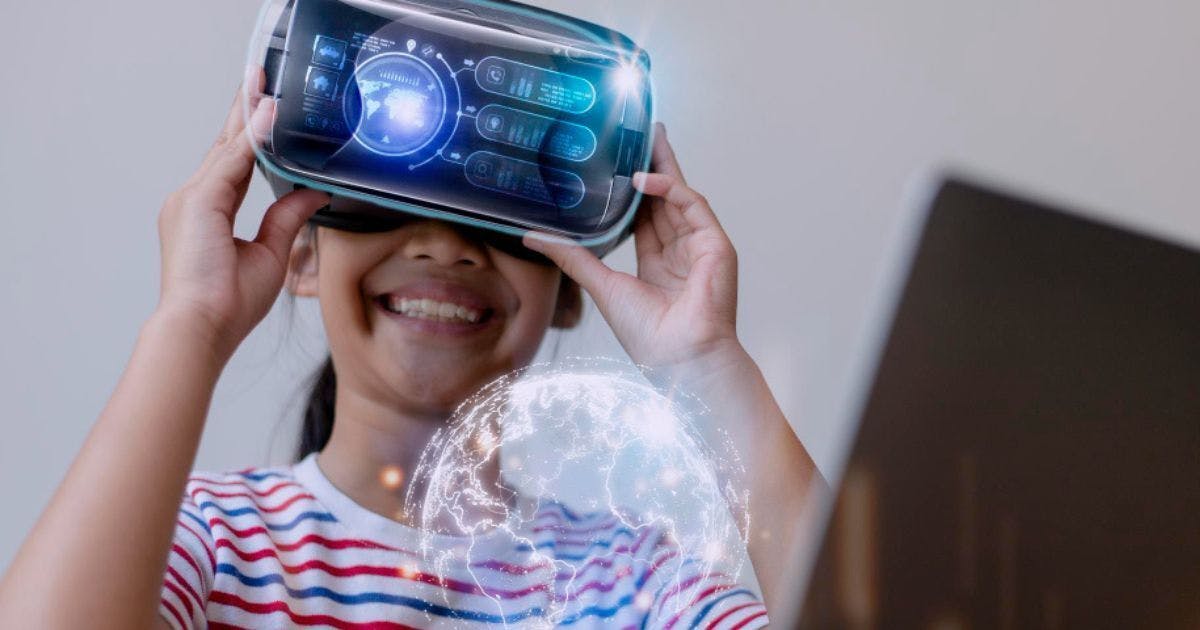The term “metaverse” has been a buzzword used throughout the tech industry for some time now, with everyone from gamers to investors scrambling to learn more about the potential of this new digital environment. However, the metaverse has impacts far beyond entertainment and commerce.
Metaverse has the potential to revolutionize the way we approach education.
Beyond virtual chat rooms and video games, the digital worlds of the metaverse can transport students to places they could have never imagined visiting through the power of virtual reality (VR) and augmented reality (AR) technology. From the ocean’s depths to the surface of Mars, the possibilities the metaverse unlocks for truly immersive learning are seemingly boundless.
Through these immersive experiences, students can enhance their understanding of complex concepts and help them retain information more effectively. Research has shown that immersive technologies such as VR can improve memory recall, increase motivation, and improve classroom engagement in learners. For those who struggle with traditional classroom learning, these new technologies can give students a new way to succeed.
That means a more accessible and inclusive learning experience for all.
The traditional classroom model doesn’t work for everyone.
The widening gap in student learning abilities combined with expanding class sizes across the country makes it challenging for teachers to provide a more typical, inclusive learning environment. The metaverse can offer a different and more inclusive approach by enabling students to participate in a virtual learning environment tailored to their needs.
Students in rural or underserved areas who might not have access to specialized resources or high-quality education will also see benefits. Within the metaverse, these students can access the same high-quality content and experiences as students in more affluent areas, bridging the growing digital divide.
However, the metaverse isn’t only about the individual; it also offers opportunities for social connection and teamwork. Collaboration is the core component of many existing metaverse experiences, with users working together to solve puzzles, complete challenges, and build virtual worlds. Inside the classroom, students can collaborate on group projects, share ideas, and learn from one another.
Beyond classwork, students can also develop essential social and emotional skills such as communication, teamwork, and problem-solving. These experiences help kids feel more connected to one another, which, in turn, can translate to them being more active in their communities and achieving higher academic success.
The metaverse also has its challenges regarding education.
The demand for infrastructure and technology support is among the main challenges the metaverse poses to schools.
Schools must make the required hardware and software investments to construct and access the metaverse, which can become expensive depending on district sizes. With growing teacher shortages and tightening budgets, some schools need more resources to allocate to this technology. Additionally, a digital divide initially meant to be solved could be strained due to students needing the means or skills to use the equipment required at home.
Finding qualified teachers who can use the metaverse effectively may still present its challenge, even with adequate resources. Teachers will need the training to develop a curriculum, promote learning, and control student behavior in virtual and conventional classrooms. A sizable investment in teacher development, training, and continued support is also necessary to guarantee that educators have the knowledge and tools they need to thrive.
Finally, concerns about safety and privacy within the metaverse may keep some educators on edge. Similar to any device connected to the Internet, the metaverse is susceptible to cyberbullying, harassment, and other types of online abuse. Schools must create policies and processes to safeguard their students online and stay up with and continually revise them based on these evolving digital environments.
Despite these challenges, the positive impact of the metaverse in education is almost impossible to ignore.
By providing an immersive, inclusive, and collaborative learning experience, the metaverse can transform education and provide students with a learning experience that’s (quite literally) out of this world. As technology evolves, parents, educators, administrators, and policymakers must remain on top of technological advancements and consider the opportunities the metaverse presents for education.
Fortunately, there are a lot of pilot projects and partnerships that make it easy to integrate the metaverse into the classroom. Companies like Tynker can assist in bridging the technology and education divide and give students the skills they need to flourish in the digital era by collaborating with schools and other educational institutions.
Ultimately, the metaverse is just one part of the growing toolkit of the modern educator. The challenge is ensuring that all key stakeholders, from policymakers, educators, parents, and firms, can partner well. Through this collaboration, we can create a more immersive, inclusive, and collaborative learning experience that prepares students for success in the 21st century.
Are you ready to plug in?
This article was first published on HACKERNOON





